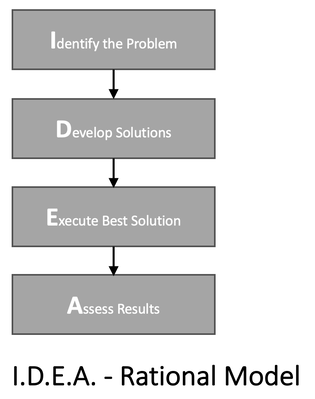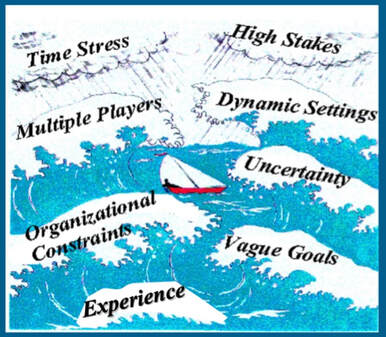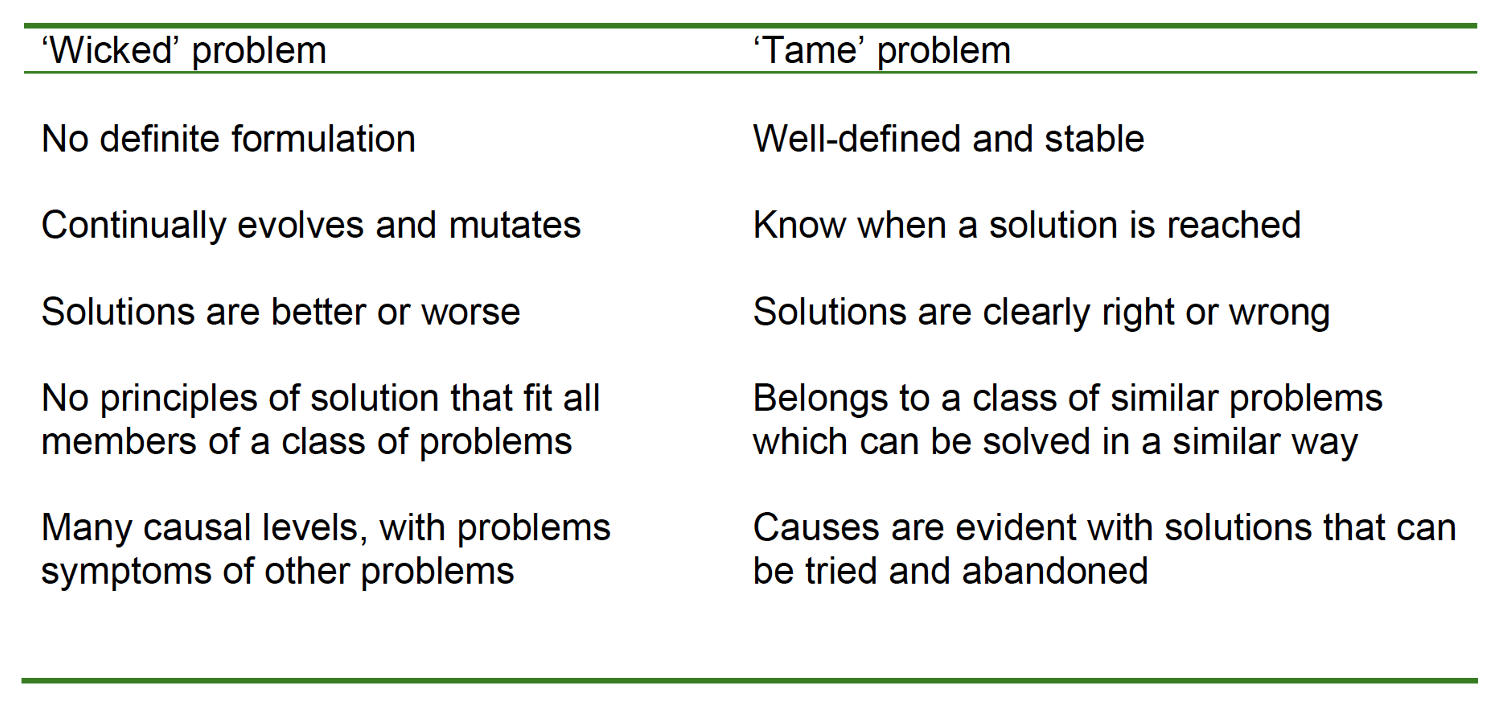A wicked problem refers to a problem that is both intractable and not suited for scientific solutions. It’s a type of problem that due to certain characteristics proves difficult if not impossible to solve. Wicked problems are dynamic, often cyclical or systemic, and lack critical information. With competing goals and multiple stakeholders there is no single, optimal, or correct solution. This is in contrast to “tame” problems, that tend to be well structured, linear, and have a clear goal, correct answer, or stopping point. Examples of wicked problems often revolve around issues of social planning. These include things like how a community can better respond to natural disasters, famine, disease, crime, poverty, war, and issues of human rights. The Scientific AppRoach In trying to address wicked problems, one of the main criticisms is attempting to use models that are better suited for solving tame problems. It’s the push for solutions using rational or scientific models that tend to be reductionist and often lead to making the problem worse rather than better. The scientific approach spends a lot of time and resources up front, trying to identify or define a problem. In doing so, they often break the problem down into manageable “sub-problems” that can be studied experimentally in a laboratory or a controlled environment. In practice, this includes developing an exhaustive list of options to compare and contrast, leading to a correct or optimal solution. Aspects of the problem that fit into the scientific approach are seen as viable points of leverage, while any aspect that can’t be measured or doesn’t fit this approach is viewed as pragmatically irrelevant. After all, it is science that harnesses the power of concepts like validity, reliability, and causation to create solutions that can be tested. Therefore, any resources dedicated to aspects of the problem that are not supported by this approach are labeled as pseudo-science or guess work. It might be considered research, but it isn’t scientific research. When it comes to making a wicked problem worse, the reductionist nature of the scientific approach often leads to a concept called “Chandlers Fence” and/or “The Law of Unintended Consequences”. In brief, this is when the focus on solving one aspect of a problem then leads to secondary or tertiary impacts that go unforeseen. A good example was focusing in on the problem of rats destroying the sugarcane crop in Hawaii. The reductionist solution was to import mongooses to eat the rats. And within ten years the ecosystem of the island had been devastated, with not only the loss of native birds, reptiles, and mammals, but still allowing for plenty of rats. The naTURALISTIC APPROACHGiven the above limitations, the question becomes, what are some ways that we might better address wicked problems? In a broad sense, one alternative is to use a naturalistic approach, treating wicked problems with tools specifically designed to help navigate rather than solve the problem. Instead of a correct or optimal solution, a natural approach looks at making steady improvements that help a community manage a problem over time. It takes the problem out of the laboratory and into the real world.  Characteristics of NDM - post 1993 version by Gary Klein Characteristics of NDM - post 1993 version by Gary Klein In contrast to rational or scientific approaches, NDM came about in the early 1980’s to study how people actually make decisions under real world conditions. This included firefighters, military commanders, nurses, pilots, and other professions that routinely deal with ill-structured, dynamic problems. This includes things such as time pressure, uncertainty, vague goals, high stakes, organizational constraints, team coordination and multiple stakeholders. The NDM approach focuses on how we develop expertise and handle problems outside of a laboratory or controlled settings using pre-defined tasks given to novice subjects. As you can see, the characteristics of NDM are similar in many ways to those present in wicked problems. And over several decades, the NDM community has developed a number of tools that have proven useful. These tools include, but are not limited to:
0 Comments
Your comment will be posted after it is approved.
Leave a Reply. |
Authors
Richard Feenstra is an educational psychologist, with a focus on judgment and decision making.
(read more) 
Bobby Hoffman is the author of "Hack Your Motivation" and a professor of educational psychology at the University of Central Florida.
(read more) Archives
April 2023
Categories |

 RSS Feed
RSS Feed
